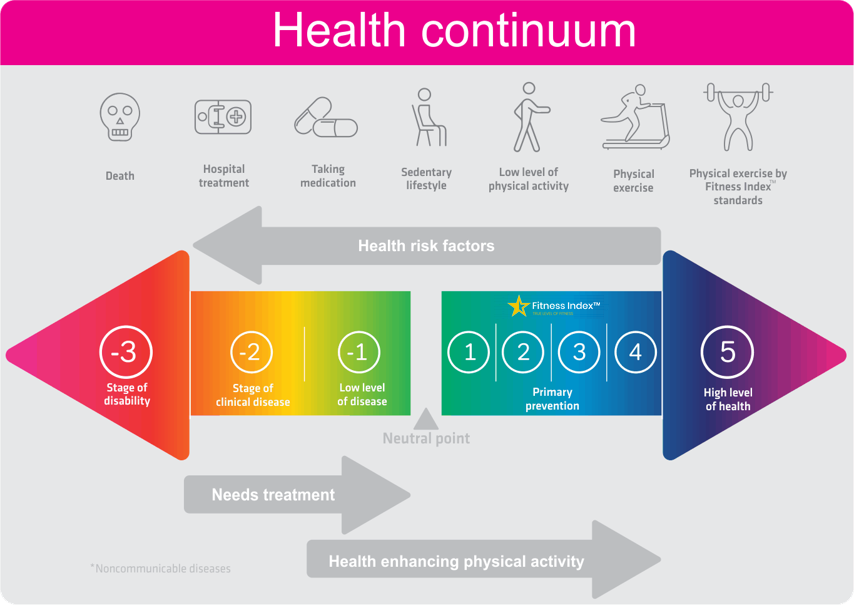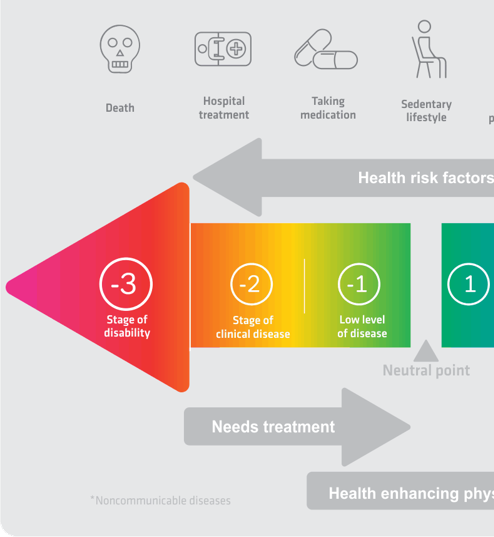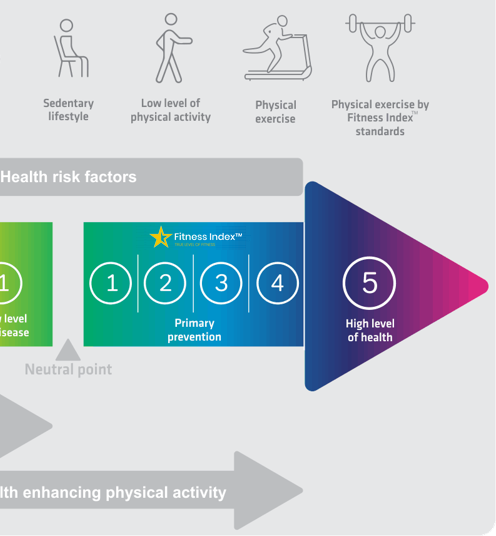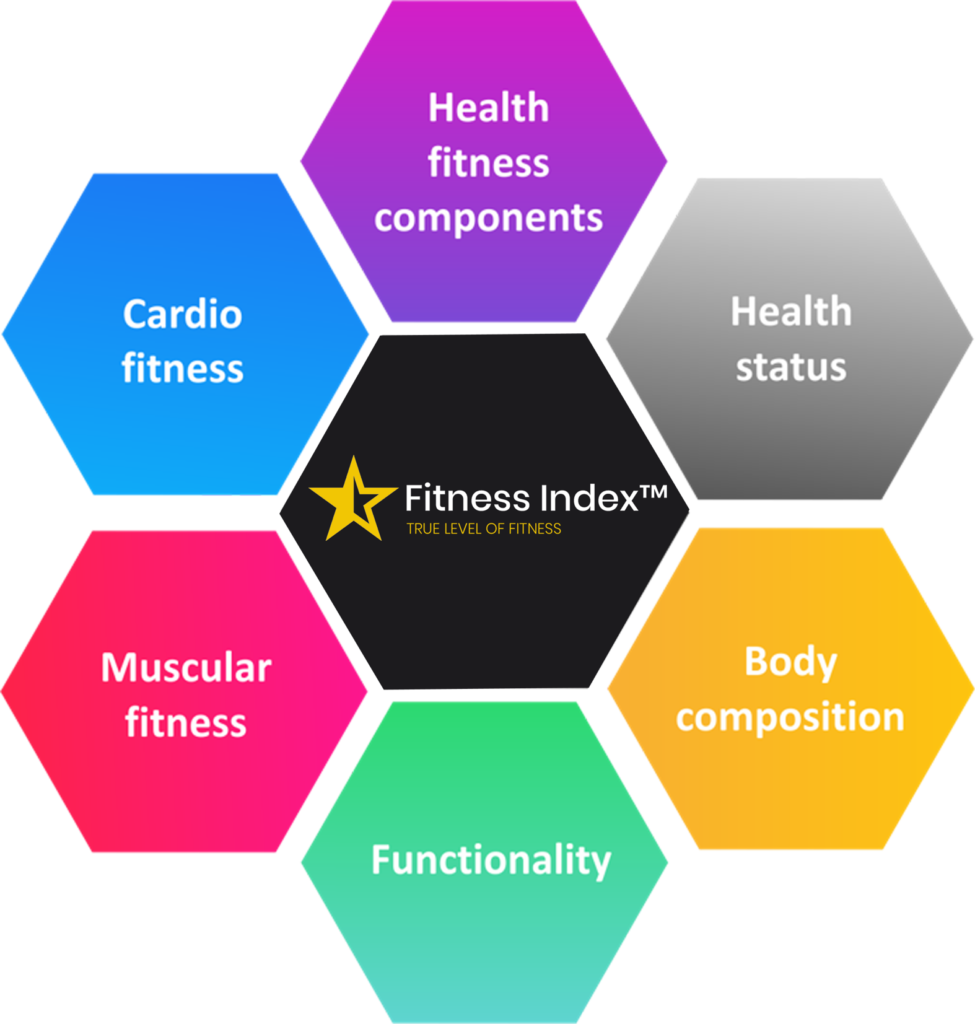True level of fitness
Physical activity plays a vital role in improving health and well-being of individuals who face health challenges such as cardiovascular disease, diabetes, and obesity.
This is fantastic fact, but should we stop there? Is walking few times a week enough to have proper health?
Studies show that physical activity alone is not enough to do conduct major health benefits. Therefore - it is recommended for a person to take care of physical exercise, diet, sleep quality and stress management. The holistic approach is the best buy when it comes to health fitness.
How can we know if we are fit?
We have to test it. Diagnostics informs us about our current health status and risk factors, gives us directions to go to in our training programme, as well as helps us to see if our work was appropriate in the end.
There is a common saying –
“If you are not measuring – you are guessing!”
which summarizes it perfectly. Testing is obligatory if you want to be precise and reliable in the fitness industry. For timely detection, and treatment of detected diseases, it is necessary to perform periodic annual systematic medical examinations. Systematic medical examinations should detect any potential disease and its stage, that shows us if you are physically healthy or not.
If a disease or indication of future problematic condition is detected during a systematic examination, additional specialist examinations should be included. However, if the systematic examination shows that you are healthy, the question remains:
How healthy are you?
On what level is my physical health?
Physical health level depends on physical readiness to oppose physical load, and can be directed to health fitness or to sport performance.
The health continuum
Around the world live hundreds of millions of people in so-called transient states of disease and health, in states that do not require classical medical help. It is a phase of a sedentary lifestyle. Disease symptoms are not yet present, but with passive waiting will inevitably occur. However, if they do not improve their health and fitness status, it is only a matter of time when health problems will occur.
Moving from the center to the left is an indicator of a progressive deterioration of the health condition. Moving from the center to the right points to improving the level of health.
Left side of the continuum
On the left side of the continuum, there is a phase of a low level of disease. The person in this phase has no diagnosis yet, but her quality of life is disrupted - she sleeps badly, gets tired quickly. These are people who, despite their health problems, perform more or less efficiently everyday activities. But, is this a life you imagine for yourself or your loved ones? Going further to the left there is a stage of clinical disease where symptoms occur. Going even further can result in disabilities so it is called the stage of disability. At a stage when a person is diagnosed with a disease, he or she does not need a fitness trainer but a doctor who will help to achieve a neutral phase. To understand better this situation, imagine a person drowning. Does she or he needs a swim instructor at that moment or Mitch Buchannon?
The person that is in stage 1-2 is close to coming to the „dark side“. The trainer should define the priorities while the main objective is improving the components with a low result. If there is any pain, other practitioners, such as physiotherapists, or nutritionists, should be included in the process.
Stage 3-4 indicates the progress phase in a level of health and fitness. In this phase, life quality is at a higher level. The training process is still focused on improving the components with lower results, but the ratio of training for components that need work and the ones that should maintain the level of result is different.
Right side of the continuum
Moving further to the right we come to a phase of a high level of fitness and health and the total absence of symptoms. It is a phase when a client has already achieved a lot and needs to maintain that level. It also means a lot to the trainer – to write a program that will maintain the results but also motivate the client to stay at this level of fitness. When a person comes to this stage, it is necessary to redefine the goal and to include elements of sports performance in the training. The client can maintain in this stage for years with a suggestion to include various training models like elements of sports performance components (for example agility, power or anaerobic endurance...). You can see clearly that person who has achieved this level has a long path to the left side of the continuum. High level of fitness ensures a high level of general life quality and positive effect on the economic aspect. A person in this phase will reduce days of sick leave and will be more productive.
Health fitness components
Health enhanced fitness goals are achieved through an exercise that improves and maintains cardio-respiratory system functions, healthy body composition, muscular strength and endurance, and basic functionality. But before starting with physical activity, positive health status must be achieved.
For most people, physical activity is very safe and without risk. But what if a physical activity minorizes your health? For this reason, some people should check their health more in detail before engaging in physical activity. So, it is necessary to answer questions from the health questionnaire. For people between the ages of 15 and 69, questionnaires for assessing the risk factors for health fitness assessment and a questionnaire for assessing the risk factors for cardiovascular disease will indicate whether to consult a doctor before starting the exercise. If a person is older than 69 and is not regularly active, it is important to contact a doctor before engaging in physical activity.
So, there are four basic Health Fitness Components:
Body composition
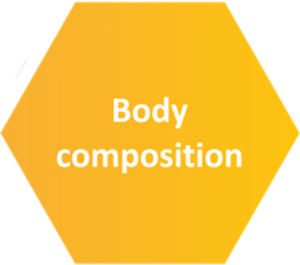 To describe the relative percentage of fat and immature tissue in the body, we use body composition. The percentage of body fat refers to the percentage of total body fat that is composed of fat. This number is obtained by dividing fat mass with body mass and multiplying by 100%. Fat-free mass refers to the mass of non-fat tissues. The composition of the body is an important aspect of total fitness due to illnesses associated with a small or large percentage of fat tissue.
To describe the relative percentage of fat and immature tissue in the body, we use body composition. The percentage of body fat refers to the percentage of total body fat that is composed of fat. This number is obtained by dividing fat mass with body mass and multiplying by 100%. Fat-free mass refers to the mass of non-fat tissues. The composition of the body is an important aspect of total fitness due to illnesses associated with a small or large percentage of fat tissue.
Prevention of type 2 diabetes and obesity reduction, in general, are just some of the benefits we can achieve by improving this component.
Functionality of locomotor system
 To perform a day-to-day basic activity without getting injured, we need an ability that is called functionality. Basic functionality includes breathing, posture, balance, basic movement patternsmobility and stability. Improvement in this component directly affects the overall quality of life by facilitating the performance of everyday tasks, whether in training or in life in general. Furthermore, it affects the reduction of pain in the lumbar spine and reduces the risk of injury.
To perform a day-to-day basic activity without getting injured, we need an ability that is called functionality. Basic functionality includes breathing, posture, balance, basic movement patternsmobility and stability. Improvement in this component directly affects the overall quality of life by facilitating the performance of everyday tasks, whether in training or in life in general. Furthermore, it affects the reduction of pain in the lumbar spine and reduces the risk of injury.
Muscular fitness
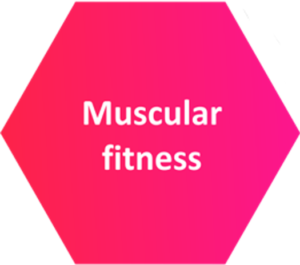 Muscular fitness is divided into muscular strength and muscular endurance.
Muscular fitness is divided into muscular strength and muscular endurance.
Moving heavy objects and lifting heavy weights requires maximum strength. Muscle strength is defined as the maximum amount of force a muscle or muscle group can produce during a contraction.
If you are a pro in carrying bags or climbing up the stairs, that means that your muscle endurance is at a high level. Muscle endurance is the ability of muscles or muscle groups to repeatedly contract for a longer period of time without fatigue. Activities requiring muscular endurance include maintaining proper body posture, gardening and generally training with a large number of repetitions. By improving muscular fitness we affect many aspects, primarily on the prevention of osteoporosis, and thereby reduce the risk of fall and bone fractures.
Cardio fitness
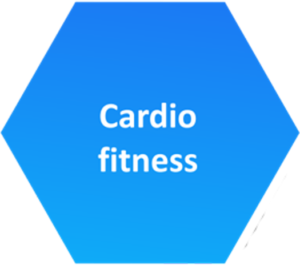 Whether the functional abilities of your heart, lungs, and muscles are at a satisfying level, is indicated by cardio fitness. An indicator of cardio fitness is maximal oxygen uptake. Based on information on oxygen consumption, it is possible to define the initial training load and even the calorie consumption of the person. To estimate the oxygen uptake, we use step test or a submaximal test on the ergometer (track or bicycle). So, how do we affect health by improving this Health Fitness Component?
Whether the functional abilities of your heart, lungs, and muscles are at a satisfying level, is indicated by cardio fitness. An indicator of cardio fitness is maximal oxygen uptake. Based on information on oxygen consumption, it is possible to define the initial training load and even the calorie consumption of the person. To estimate the oxygen uptake, we use step test or a submaximal test on the ergometer (track or bicycle). So, how do we affect health by improving this Health Fitness Component?
Aerobic training does not only help in the physiological aspects of the human body but also in mental. Generally, aerobic training helps with: blood controls images, blood pressure control, and obesity, reduces inflammatory processes in the body and Helps recovery and also increases overall stamina. People with a higher maximum oxygen supply also recover faster from activity (both high and low intensity). Cardiovascular diseases are the major cause of death in the last few years, and it is predicted that this trend will continue in Europe in the next 20 years. Several scientific studies have confirmed the beneficial effects of cardio training on on mortality rate reduction. A cardio training mode is a form that has the most health-oriented improvements as well as the direct impact on the quality of life of a person.
Important to remember
Subscribe for our blog Today and receive exclusive content!
You will get new blogs each week. Unsubscribe any time.
WE DONT SHARE YOUR PERSONAL INFO WITH ANYONE | PRIVAT POLICY


